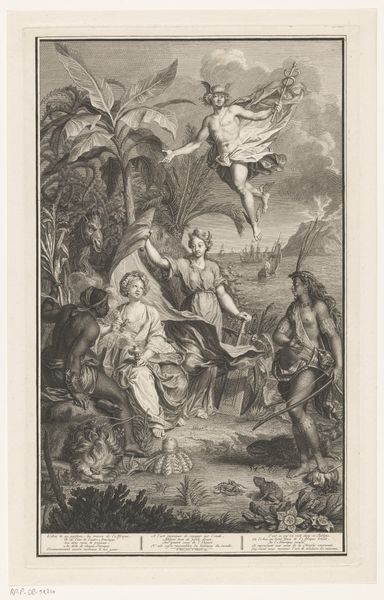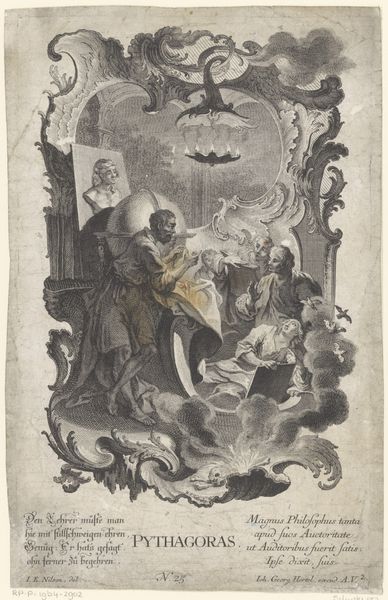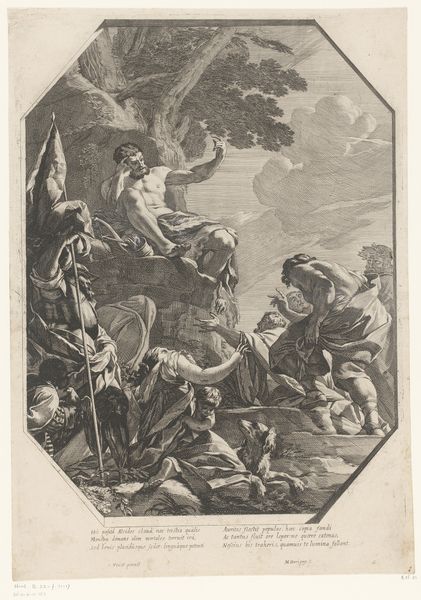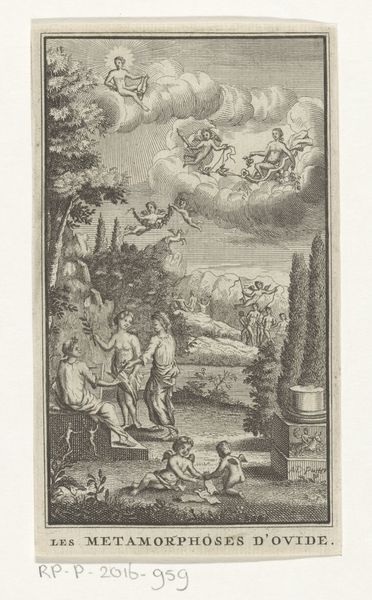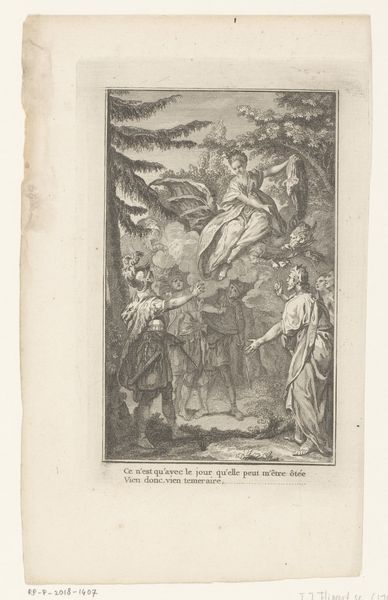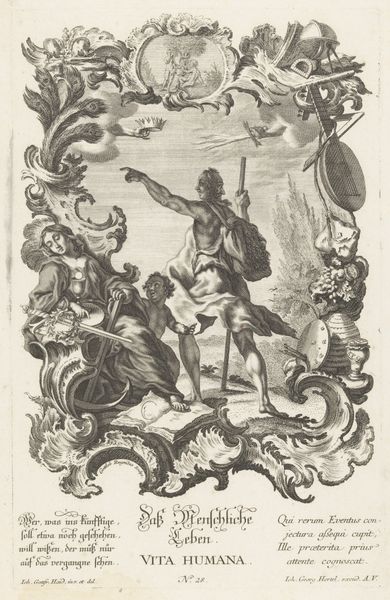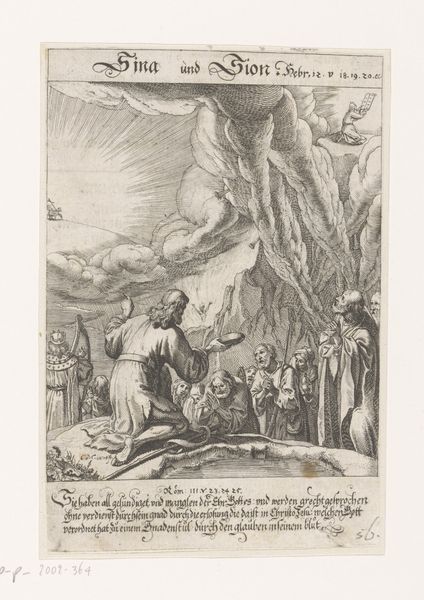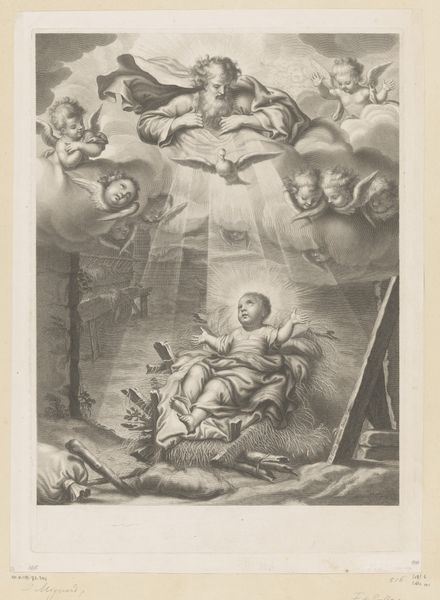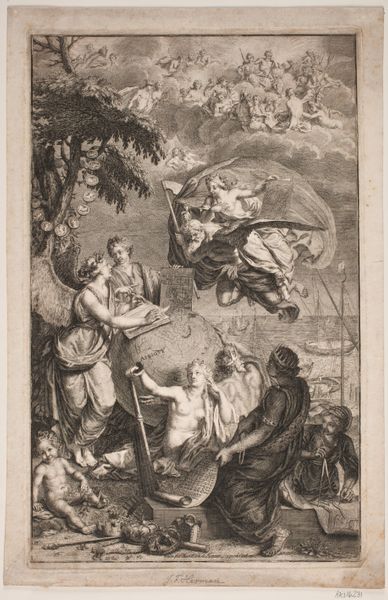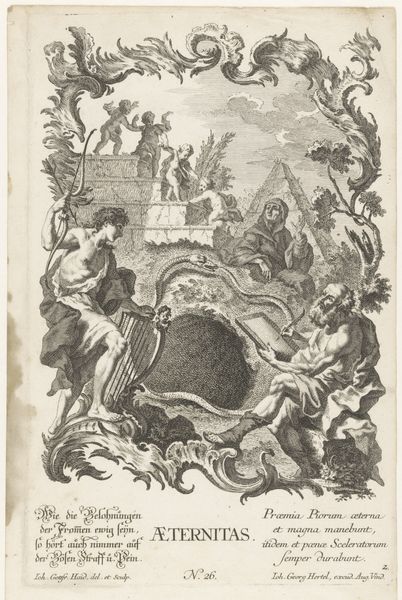
print, engraving
#
baroque
# print
#
old engraving style
#
figuration
#
line
#
history-painting
#
engraving
Dimensions: height 79 mm, width 59 mm
Copyright: Rijks Museum: Open Domain
Nicolas Cochin made this small print, “The Temptation of St. Anthony,” sometime in the 17th century. It's an etching, meaning the artist coated a copper plate with wax, drew his design, and then bathed the plate in acid. The acid bit into the exposed lines, allowing for the image to be printed. Think about the labor involved: Cochin needed skill as a draughtsman, but also as a technician. The quality of the lines, the tonal range from light to dark – all of this depended on his mastery of the etching process. Prints like this were not “fine art” in the modern sense. They were a reproductive medium, a way of disseminating images widely and relatively cheaply. We know from period inventories that people bought prints like this in bulk. They were collected, traded, and pasted into albums. This print shows us that art and craft were not so separate in the 1600s. The value lay in Cochin’s skill, and the accessibility that his chosen medium afforded.
Comments
No comments
Be the first to comment and join the conversation on the ultimate creative platform.

